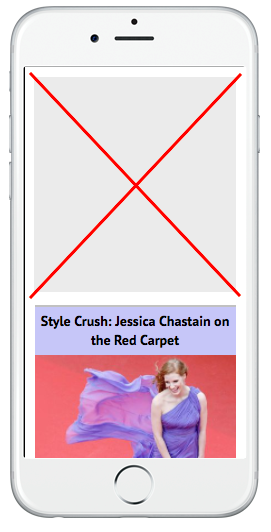As mentioned in our article on Facebook’s new content quality policy, Facebook is cracking down on not only publishers’ ads on its platform, but also on the websites these ads link to. We will dive into each of these policies, thoroughly explaining how you can stay on the compliant side of these strict guidelines.
One of the important elements of these new parameters concerns the placement of ads on publishers' websites. Through extensive experimentation with ad placements and accumulative experience with multiple publishers, MGID has been able to define recommendations that will ensure revenue and engagement for publishers, while providing the best user experience.
Below are the most important do’s and don’ts needed to bring your ad placement up to Facebook ad placement code.
1. Remove Ads From the Header on Both Mobile and Desktop Websites


Many publishers believe placing large, obtrusive ads will translate into more revenue. But analytics prove that this tactic does not increase engagement, while interrupting the cohesion of your website.
2. Place No More Than One Native Ad Unit in the Article Page, and One on Sidebars

Try to find a reasonable balance between content and ads, so that your advertisements do not overshadow the entire page.
3. Position No Ads Above Your Quality Content on First Screens of Mobile Websites
Because mobile screens are too small to display ads and content simultaneously, placing ads first will sacrifice the users overall viewing experience.
4. Use Less Than 30% Of Your Desktop Website’s First Screen for Ad Space

The user’s first impression of your initial page should not be overpowered by ads. A 30% ad, 70% content is a practical ratio for complementing quality content with ad content to viewers.
5. Use PG-Rated Content for Website Buying and Otherwise Acquiring Facebook Visitors
It is recommended to avoid content that could be potentially shocking or offensive to your audience. This ensures a positive experience for all kinds of potential website visitors. You may learn about content rankings from our guide here.
6. Avoid All Forms of Pop-Ups, First Page Interstitials, Floating Ads, and Overlays

For years, these ad formats have been recognized as overly aggressive and ineffective. Ads of this nature are antiquated by 21st century ad standards.
Some publishers have already learned the hard way and have faced repercussions for poor ad placement on their websites. But by implementing all of the above suggestions, their websites were brought up to Facebook compliance and restrictions could be removed. By proactively following these guidelines, you can avoid restrictive consequences and ensure that your ad placement is in agreement with Facebook’s policies.





